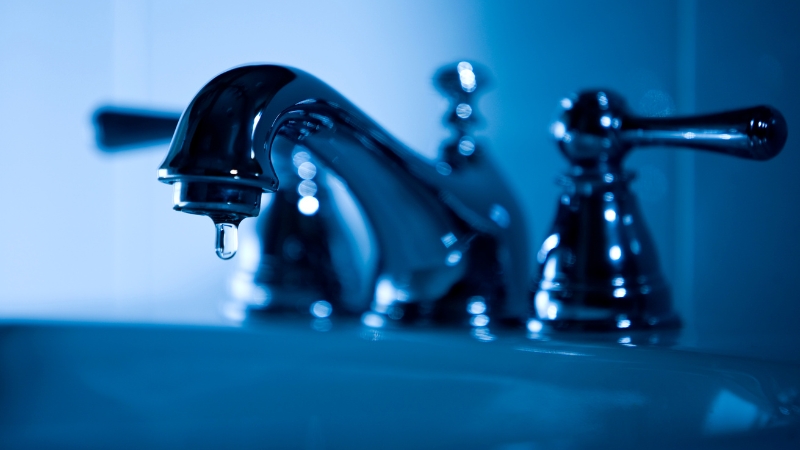The plumbing system is an essential part of any building, and it is crucial to ensure that it functions correctly. One common issue that can arise in plumbing systems is leaks. Leaks can cause significant damage to a building’s structure and lead to costly repairs. Detecting leaks early on is crucial to prevent further damage and reduce repair costs.
In this ultimate guide to leak detection, we will provide you with tips and tricks for finding leaks in your plumbing system. We will also discuss the different methods and technologies used for leak detection, including integral testing and pressure reading. We will cover common issues that can arise with leak detection, such as difficulty detecting leaks in vinyl liner pools or vessels with complex chamber systems.
Detecting leaks inside your plumbing system can be a challenging task, especially if you don’t know where to start looking. Fortunately, there are several methods and technologies available for detecting leaks. Integral testing involves adding a dye or tracer gas into the water supply lines to identify the location of the leak accurately. Pressure reading is another effective method used by plumbers to detect leaks in pipes or fittings.
However, even with these advanced technologies at our disposal, some issues can make leak detection more challenging than usual. For example, vinyl liner pools present unique challenges vessels with complex chamber systems require specialized equipment and expertise for accurate leak detection.
While some homeowners may attempt DIY solutions for leak detection applications, hiring a professional plumber is always recommended. A professional plumber has the expertise needed to use specialized equipment effectively and accurately assess the rate and level of leaks in your plumbing system.
Table of Contents
ToggleTypes of Water Leaks and Their Causes: Understanding the Basics
Running Water Leaks: Causes and Effects
Running water leaks are one of the most common types of leaks, caused by damaged pipes or fixtures that allow water to continuously flow. This can lead to high water bills and potential water damage if left unaddressed. One common cause of running water leaks is aging pipes, which can become corroded over time and eventually develop cracks or holes.
Improper installation is another potential cause of running water leaks. If pipes are not installed correctly, they may not be able to withstand the pressure of the flowing water, leading to damage over time. Environmental factors such as soil movement or shifting foundations can also contribute to running water leaks.
If you suspect a running water leak in your home or business, it’s important to take action quickly. Not only can these leaks lead to costly repairs if left unchecked, but they can also waste a significant amount of water over time. A professional plumber can help identify the source of the leak and recommend appropriate repairs.
Losing Water Leaks: Understanding the Basics
Losing water leaks are another common type of leak that occur when there are cracks or holes in pipes or pool liners, resulting in a decrease in the water level over time. These types of leaks can be difficult to detect because they often occur underground or behind walls where they cannot be seen.
One way to identify losing water leaks is by monitoring your monthly utility bill for any unusual spikes in usage. You may also notice damp spots on walls or ceilings, indicating that there is a hidden leak somewhere in your home.
If you suspect a losing water leak, it’s important to act quickly before it causes significant damage to your property. A professional plumber can use specialized equipment such as thermal imaging cameras and moisture detectors to locate the source of the leak and make necessary repairs.
Water Level Changes: Indicating Potential Issues
Changes in the water level in your pool or irrigation system can also indicate a leak. If you notice that the water level in your pool is consistently decreasing or that your irrigation system is not working as efficiently as it used to, there may be a leak somewhere in the system.
In addition to pool and irrigation systems, changes in water level can also indicate potential issues with the foundation of a building. If you notice cracks in walls or floors, doors that no longer close properly, or other signs of structural damage, it’s important to have a professional inspect your property for any underlying issues.
Natural Disaster-Related Leaks: Causes and Effects
Finally, natural disasters such as flooding or earthquakes can also cause leaks by damaging pipes or infrastructure. In these cases, it’s important to contact a professional plumber or contractor who specializes in disaster recovery to assess the damage and make necessary repairs.
Home Leak Detection: Common Signs and Symptoms to Look For
Wet Spots on Walls or Floors Can Indicate Water Leaks in the House
One of the most common signs of a water leak in your house is the presence of wet spots on your walls or floors. These spots are usually caused by water seeping through cracks and crevices in your plumbing system. If left unchecked, these leaks can lead to serious damage to your home’s structure and even mold growth.
To identify the source of the leak, start by inspecting the area around the wet spot for any visible signs of damage. Check for cracked tiles, warped floorboards, or peeling paint. If you can’t find any obvious signs of damage, it may be necessary to call in a professional plumber to perform a more thorough inspection.
A Sudden Increase in the Water Bill May Be a Sign of a Hidden Water Leak
Another sign that you may have a hidden water leak is a sudden increase in your water bill. If you notice that your bill has gone up significantly without any corresponding increase in usage, it’s possible that there is an undetected leak somewhere in your plumbing system.
To confirm whether this is the case, turn off all faucets and appliances that use water and check if your meter is still running. If it is, there may be a hidden leak somewhere in your home that needs to be addressed immediately.
Pool Leak Detection Can Be Done by Observing a Decrease In The Water Level Over Time
If you have a pool at home, it’s important to keep an eye out for signs of leaks as well. One way to do this is by observing the water level over time. If you notice that the level has dropped significantly without any corresponding change in usage patterns, there may be a leak somewhere in your pool.
To locate the source of the leak, start by examining all visible components such as pipes, pumps and filters for cracks or other visible damage. You can also perform a local test by placing dye near suspected areas to see if it gets sucked into the leak. If you’re unable to locate the source of the leak, consider calling in a professional pool technician for help.
Weather Conditions Can Affect the Plumbing System and Cause Future Water Leaks
It’s important to note that weather conditions can also have an impact on your plumbing system. Extreme temperatures, heavy rain, and other weather events can cause pipes to expand or contract, leading to future leaks.
To minimize the risk of weather-related leaks, take steps such as insulating your pipes and ensuring that they are properly secured. It’s also a good idea to have your plumbing system inspected regularly by a professional plumber.

Thermal Leak Detectors and Air Leak Detectors: Tools for DIY Leak Detection
Air leaks in homes can lead to a significant loss of energy and money. They can also cause indoor air quality problems, leading to health issues. The best way to prevent this is by detecting and sealing air leaks early on. Air leak detectors are essential tools for DIY leak detection, allowing homeowners to identify and locate air leaks in their homes quickly and accurately.
Air Leak Detectors: Types and Benefit
Leak detectors come in various types, each with its unique features and benefits. Sniffer detectors use sensors that detect the presence of gas molecules to locate leaks. Blower door tests involve using a fan system to measure the airflow rate through a building’s envelope. Vacuum systems use negative pressure to detect leaks, while spectrometers use infrared technology.
Thermal Leak Detectors: How They Work
Thermal leak detectors work by measuring temperature differences between surfaces. They are particularly useful for detecting drafts around windows, doors, and other areas where cool or warm air may be escaping from your home. These devices are easy to use – simply point them at an area you suspect has an air leak, and they will display the temperature difference between that area and the surrounding environment.
Helium Leak Detection: A Popular Method Used by Professionals
Professionals often use helium leak detection methods to detect leaks in HVAC systems, refrigeration units, and other equipment that requires airtight sealing. Helium is used because it is non-toxic, non-flammable, and does not react with other materials or substances commonly found in HVAC systems.
Air Sealing: Preventing Air Leaks
Proper air sealing using the right tools and equipment can help homeowners save money on energy bills by preventing air leaks and improving indoor air quality. Some easy ways to check for air leaks include holding a lit candle near suspected drafty areas or using smoke pencils that release visible smoke when exposed to drafts.
Conclusion: The Ultimate Guide to Leak Detection: Tips and Tricks for Finding Leaks
Water leaks can cause significant damage to your home and property if left unchecked. In this guide, we’ve covered the basics of different types of water leaks and their causes, common signs and symptoms to look for in leak detection, as well as tools for DIY leak detection such as thermal leak detectors and air leak detectors.
By understanding the different types of water leaks, you can take preventative measures to avoid them from happening in the first place. Being aware of common signs and symptoms of water leaks can help you detect them early on before they cause extensive damage. And with the right tools like thermal detectors and air leak detectors, you can conduct your own DIY leak detection at home.
Remember that prevention is always better than cure faucets, and appliances for any signs of wear or damage can go a long way in preventing future leaks. Addressing any minor leaks immediately can save you from costly repairs down the line.
Are You Looking for a Leak Detection Specialist You Can Trust?
Looking for a plumbing and home restoration team that goes above and beyond? Look no further than Garcia Home Restoration! We offer a range of services to ensure your home is running smoothly and efficiently, including top-notch plumbing solutions, such as repair and replacement, drain cleaning, water heater installation and repair, sewer line repair and replacement, water and gas line repair and installation, and professional leak detection.
But we don’t stop there. Our team of licensed and insured experts are also highly skilled in mold remediation and restoration, as well as storm and flood damage restoration. We understand that unexpected emergencies can happen at any time, which is why we’re available 24/7 to assist you.
At Garcia Home Restoration, our mission is to provide exceptional service to homeowners throughout Contra Costa County and beyond. We take pride in our workmanship and strive to deliver excellence in everything we do. With satisfied repeat customers and referrals as the foundation of our business, you can trust us to handle all your plumbing and home restoration needs with precision, care, and expertise.
Don’t settle for less when it comes to the health and safety of your home. Contact Garcia Home Restoration today and experience the difference of our expert leak detection and restoration services!




